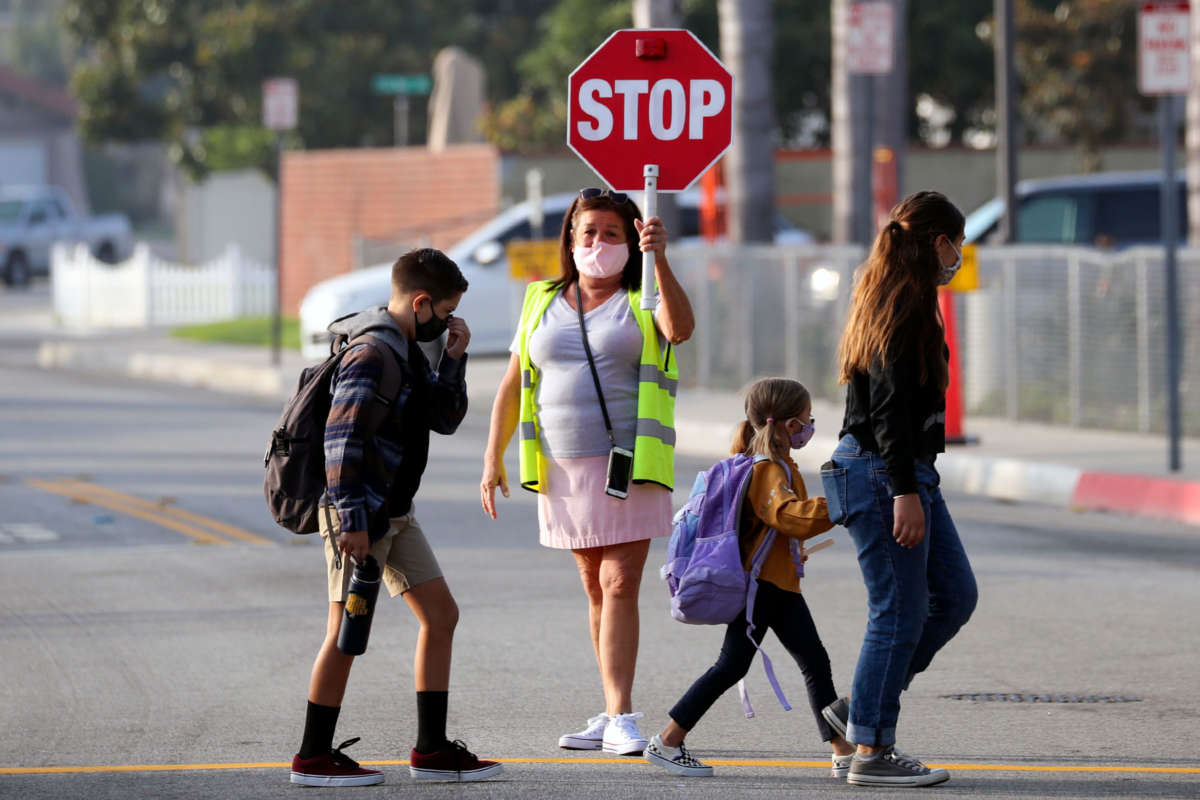Honest, paywall-free news is rare. Please support our boldly independent journalism with a donation of any size.
Officials within the Trump administration sought to pressure the Centers for Disease Control and Prevention (CDC) to downplay the risks associated with coronavirus in children in order to bolster the narrative that it was safe for schools to resume in-person instruction across the United States, according to The New York Times.
Trump officials also wanted the health agency to find data that would demonstrate the pandemic was weakening, and that it posed little risk to children, according to documents and interviews with those who were knowledgeable of the interactions between the White House and the CDC.
Officials at the CDC were alarmed at the administration’s efforts to politicize an issue that concerns national health. Some within the White House, too, had misgivings about the effort, including Olivia Troye, a former aide to Vice President Mike Pence, who told the Times that Pence’s chief of staff, Marc Short, had pressured CDC leaders to find proof that the disease had little impact on the lives of children.
Troye expressed regret at having been “complicit” in the White House’s efforts to shape CDC policy for political purposes.
“You’re impacting people’s lives for whatever political agenda. You’re exchanging votes for lives, and I have a serious problem with that,” Troye said.
The effort by the White House lasted for several weeks during the summer when President Donald Trump was repeatedly calling for states across the country to reopen schools amid the pandemic, in what many believed was a blatant attempt by the president to score a political victory.
During a political rally in mid-September, Trump falsely asserted that children were safe from coronavirus, saying that “virtually nobody” who is young is affected by the disease. “By the way, open your schools,” Trump said at the same rally.
His remarks were inaccurate and misleading: While COVID-19 does not appear to threaten children at the same rate as older populations, it can still harm them and in some cases, prove fatal. Additionally, the long-term effects of COVID-19 are also unknown at this point, including in children.
More than 500 children under 18 were hospitalized due to the disease between March and July, for example, and more than 60 children 14 years of age and under have died due to complications from COVID-19 since the pandemic reached the U.S. Hundreds of children and young adults between the ages of 15 to 24 have also died from the disease.
Beyond the threat of infection to themselves, children have also played a significant role in the spread of the disease. In fact, their role is far greater than initially presumed near the beginning of the pandemic, which makes the issue of reopening schools a contentious choice. Children can, for example, potentially contract coronavirus in classrooms and carry it to their homes and infect others while remaining free of symptoms themselves.
As more testing is done in children and more is learned about how children are spreading the disease, new revelations are giving rise to fears that the country may see another spike in coronavirus infections in the coming months, particularly among communities that have decided to resume in-person classes. According to a joint survey from the American Academy of Pediatrics and the Children’s Hospital Association, there has already been a 14 percent increase in COVID-19 cases among children during the two-week period preceding September 24.
Media that fights fascism
Truthout is funded almost entirely by readers — that’s why we can speak truth to power and cut against the mainstream narrative. But independent journalists at Truthout face mounting political repression under Trump.
We rely on your support to survive McCarthyist censorship. Please make a tax-deductible one-time or monthly donation.
